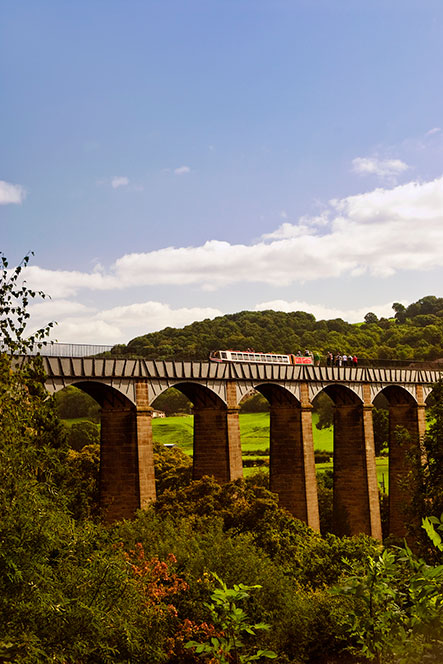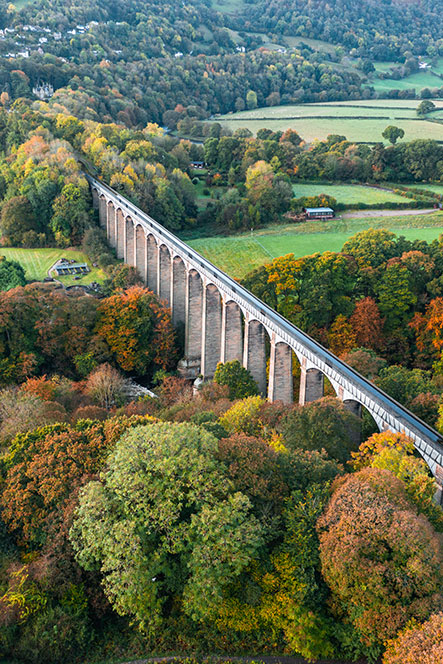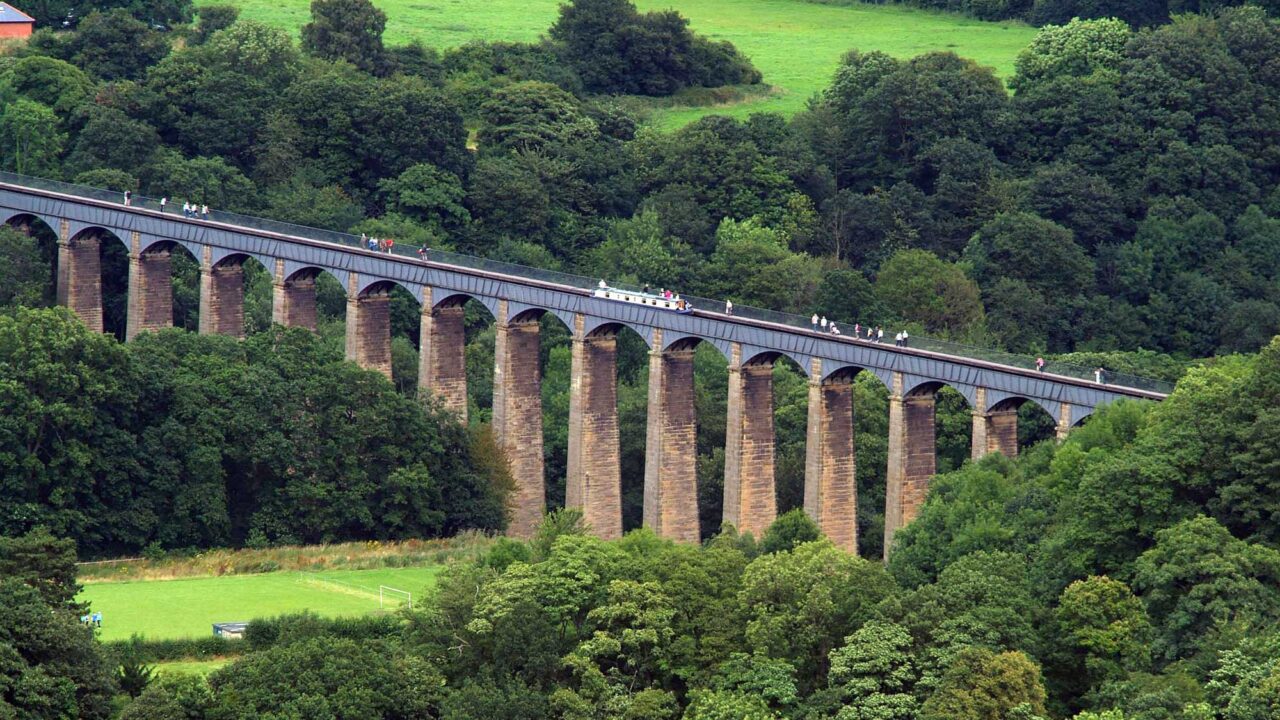
The Pontcysyllte Aqueduct and Canal World Heritage Site
Pontcysyllte Aqueduct and Canal consists of a continuous group of civil engineering features from the heroic phase of transport improvements during the British Industrial Revolution. The canal brought water borne transport from the English lowlands into the rugged terrain of the Welsh uplands, using innovative techniques to cross two major river valleys and the ridge between them. It was built between 1795 and 1808 by two outstanding figures in the development of civil engineering: Thomas Telford and William Jessop. Through their dynamic relationship the canal became a testing ground for new ideas that were carried forward into subsequent engineering practice internationally. It was inscribed as a World Heritage Site in 2009 and to be included on the World Heritage List, sites must be of outstanding universal value and meet at least one out of ten selection criteria. Pontcysyllte Aqueduct and Canal meet the following three criteria:
- Criterion (i): The Pontcysyllte Aqueduct is a highly innovative monumental civil engineering structure, made using metal arches supported by high, slender masonry piers. It is the first great masterpiece of the civil engineer Thomas Telford and formed the basis of his outstanding international reputation. It bears witness to the production capacities of the British ironmaking industry, which were unique at that time.
- Criterion (ii): The intensive construction of canals in Great Britain, from the second half of the 18th century onwards, and that of the Pontcysyllte Canal in particular in a difficult region, bear witness to considerable technical interchanges and decisive progress in the design and construction of artificial waterways.
- Criterion (iv): The Pontcysyllte Canal and its civil engineering structures bear witness to a crucial stage in the development of heavy cargo transport in order to further the Industrial Revolution. They are outstanding representatives of its new technical and monumental possibilities.



Pontcysyllte Aqueduct crosses the Dee Valley on nineteen cast iron spans at a height of 126 feet/38.4 metres: a structure recognised internationally as a masterpiece of waterways engineering and a pioneering example of iron construction. The canal exemplifies the new approaches to engineering developed by Britain during the Industrial Revolution and taken up in subsequent waterway, railway and road construction throughout the world. The engineers intervened in the landscape with a new scale and intensity, challenged by the need to cut the waterways across the grain of the Welsh upland topography. At the time of its completion this length of canal was described as ‘composed of works of more difficult of execution than can perhaps be found anywhere within an equal distance of canal navigation’. It combined vigour of engineering with a particular sensitivity to its impact on a valued landscape. All of the features were to become characteristic of highly engineered transport routes can be seen in the site, including tunnels, cuttings, aqueducts and embankments, many of them technically innovative or of a monumental scale, together with bridges, culverts, weirs and associated features. The whole site has remained in continuous use for two hundred years – for some one hundred and thirty years by traffic in coal, iron, slate, limestone and general goods, and in more recent times to carry pleasure boats and convey drinking water. It is widely valued for its historical importance, beautiful environment and breathtaking structures and attracting hundreds of thousand visitors a year.
Pontcysyllte Aqueduct and Canal are outstanding monuments of the canal age in the United Kingdom, which flourished from 1760s until the establishment of a network of locomotive railways form the 1830s. Canal building reached its zenith after 1790, during the so called ‘Canal Mania’ that saw 1,180 miles/1,900 kilometers of new waterways completed in just 20 years. The construction of a network of canals in Britain to provide transport for raw materials and goods represented a new phase in the history of inland navigation and was a fundamental factor in the Industrial Revolution, enabling and promoting rapid economic growth, regional specialisation and urbanisation.


